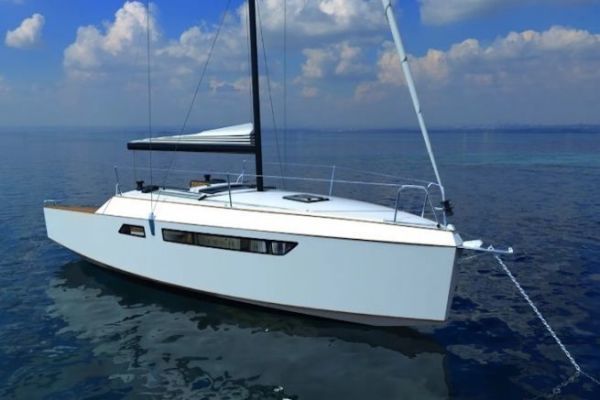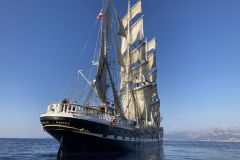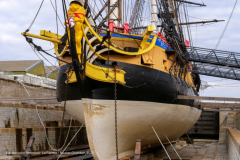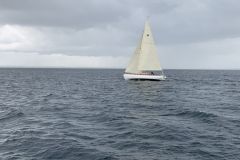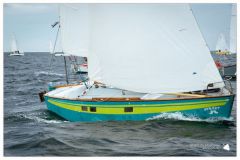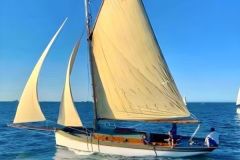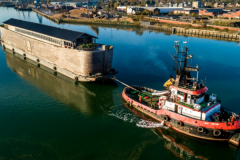Acquire experience in wood construction
Since 2019, the Brava shipyard, based in Saint-Herblain, on the outskirts of Nantes, has taken over the exclusive construction of Corsairs and Muscadets. One of each has already been built and a new Corsaire is in production.
Pierre Cizeau, founder of the yard, explains: " Following these projects, we were contacted for the restoration of these boats. We developed an experience of this constructive mode of plywood glued on a solid wood structure. It is a wood construction method from the traditional marine frame. The keel, floors and ribs are the structure on which we glue the planks to create the hull."
It is this building experience that pushes the shipyard to reimagine the "Muscadet" of today with all the learning acquired since its launch in 1963. The Brava 25 is a small wooden cruising yacht, 7.50 m long and 2.90 m wide, with a draft of 1.60 m. The plans were entrusted to VPLP, as Pierre Cizeau explains.
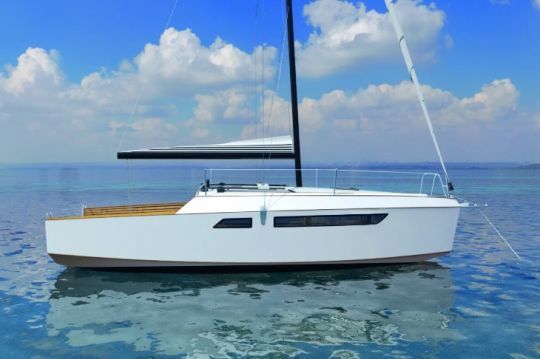
Plans signed VPLP
"Thinking about a small wooden cruising yacht made sense for VPLP, even if it may seem far from the large carbon trimarans they originated. With the opening of their office in Nantes, it was also easy to exchange."
The Brava 25 is built in the same way as the other models. The hull, deck and bulkheads are made of plywood, glued to a solid wood structure. Approved in category B, it is suitable for both day cruising and long weekends on board thanks to its interior layout for 4 persons. Its rather wide hull with volume in the bow should give it good performance and power and stability on downwind points of sail, all without the risk of swamping. It benefits from the evolutions of the last decades, without betraying the heritage of the Harlé designs.
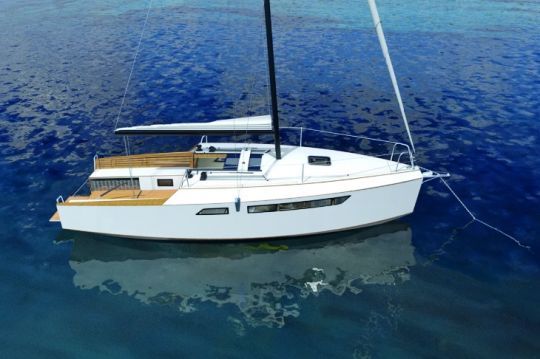
A spacious cockpit
Its spacious cockpit is equipped with side benches with storage and a tiller. The transom tilts aft to transform into a swim platform. The teugue roof occupies the entire width of the boat up to the bow. The rigging is composed of a mast with pushpit without backstay or backstay, and a large gaff sail. A genoa, an asymmetric spinnaker or a gennaker can be rigged in addition. The total sail area is 36 m2. In addition, an electric inboard motor or an electric or thermal outboard will be used for maneuvering.
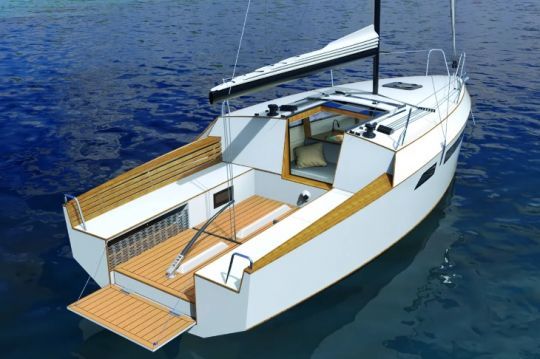
An open-plan interior for four people
Thanks to the width of the roof and the absence of a catwalk, the interior is vast and uncluttered, with a headroom of 1.50 m. The access to the companionway is offset to starboard to ensure unobstructed interior circulation.
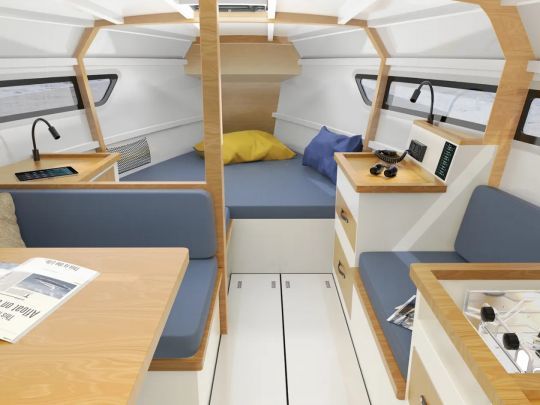
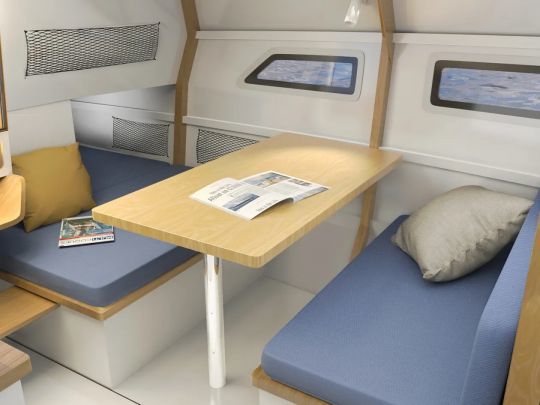
There is a double bed at the bow, a fully equipped galley to starboard with storage, a saloon opposite to port, which can be transformed into a double bed. A bench seat to starboard with a chart table and a chemical toilet complete the facilities. Chests of drawers and nets allow you to store your belongings.
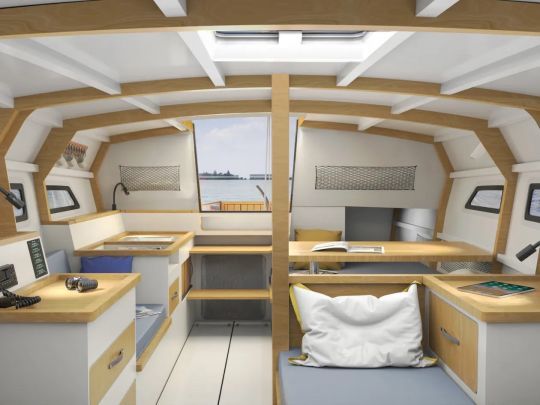
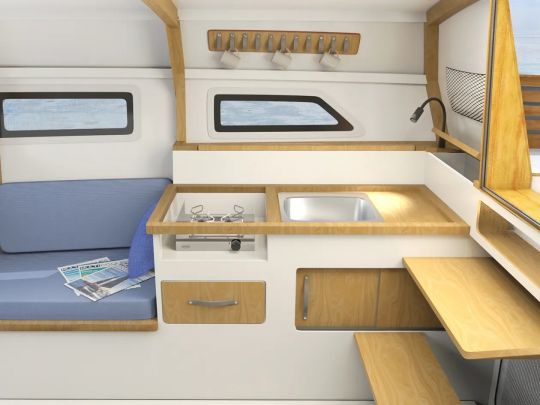
The setting up of the tools
Pierre Cizeau concludes "The preliminary design is complete. Now there is the phase of setting up the tooling. We're seeing to have all the plywood pieces and some fairly simple solid wood pieces cut out digitally. This will reduce the implementation time and systematize the construction. This final step will also determine the final pricing of the Brava 25."
In addition to the tooling, an initial owner will be needed to launch the construction of the first example, which should take a year at the beginning before decreasing to 6 months once the process is set up.
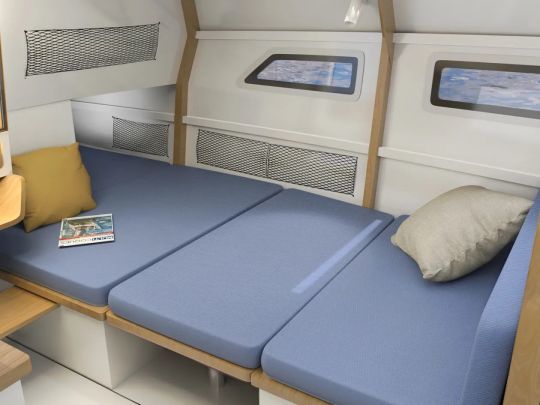

 /
/ 